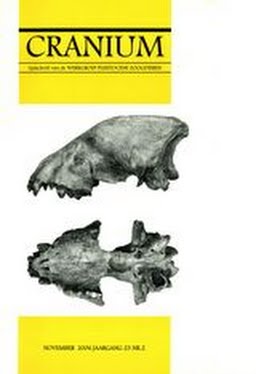2006
De Sabeltandkatten Homotherium en Megantereon (Felidae, Carnivora) van de Plio-Pleistocene site van Senèze (Haute Loire, Fr.)
Publication
Publication
Cranium , Volume 23 - Issue 2 p. 25- 38
The small village of Senèze, southwest of Lyon is known worldwide because of the fossiliferous sediments that were found here. In these, numerous fossils, including complete skeletons, of fossil mammals from the Plio-Pleistocene period have been recovered from vulcanic sediments. In many cases the fossils have found their way to established museums in Paris, Lyon and Basel, where they constitute part of the collections. Among the top pieces which the site of Senèze has yielded are, without doubt, the almost complete skeletons of the sabre-toothed cats Homotherium and Megantereon. Both belong to the Machairodontidae, the family of sabretooted cats. These cats share a number of features by which they differ considerably from modern cats. In this article some geological aspects of this site are discussed. In addition, the history of its discovery and the remarkable rich fauna’s which this site has yielded are described in short. The sabre-toothed cats Homotherium and Megantereon are described in full and compared mutually, and some typical machairodont features of both genera are discussed.
| Additional Metadata | |
|---|---|
| Cranium | |
| CC BY 3.0 NL ("Naamsvermelding") | |
| Organisation | Werkgroep Pleistocene Zoogdieren |
|
C. van Hooijdonk. (2006). De Sabeltandkatten Homotherium en Megantereon (Felidae, Carnivora) van de Plio-Pleistocene site van Senèze (Haute Loire, Fr.). Cranium, 23(2), 25–38. |
|
